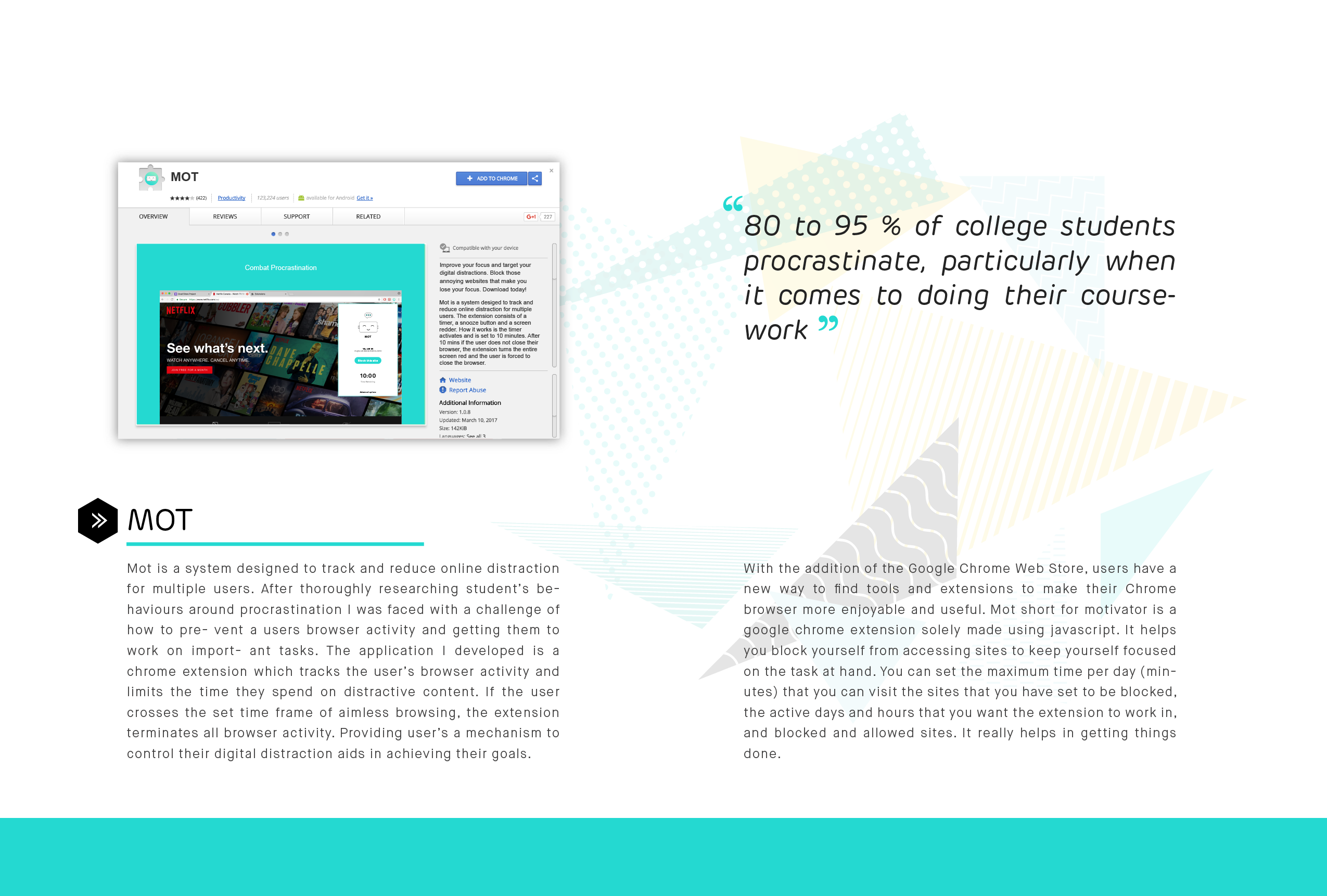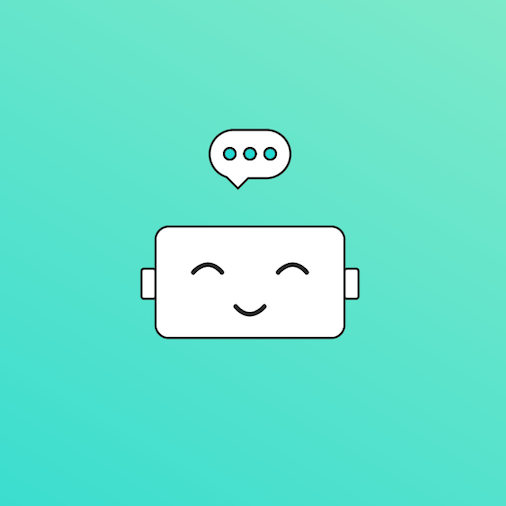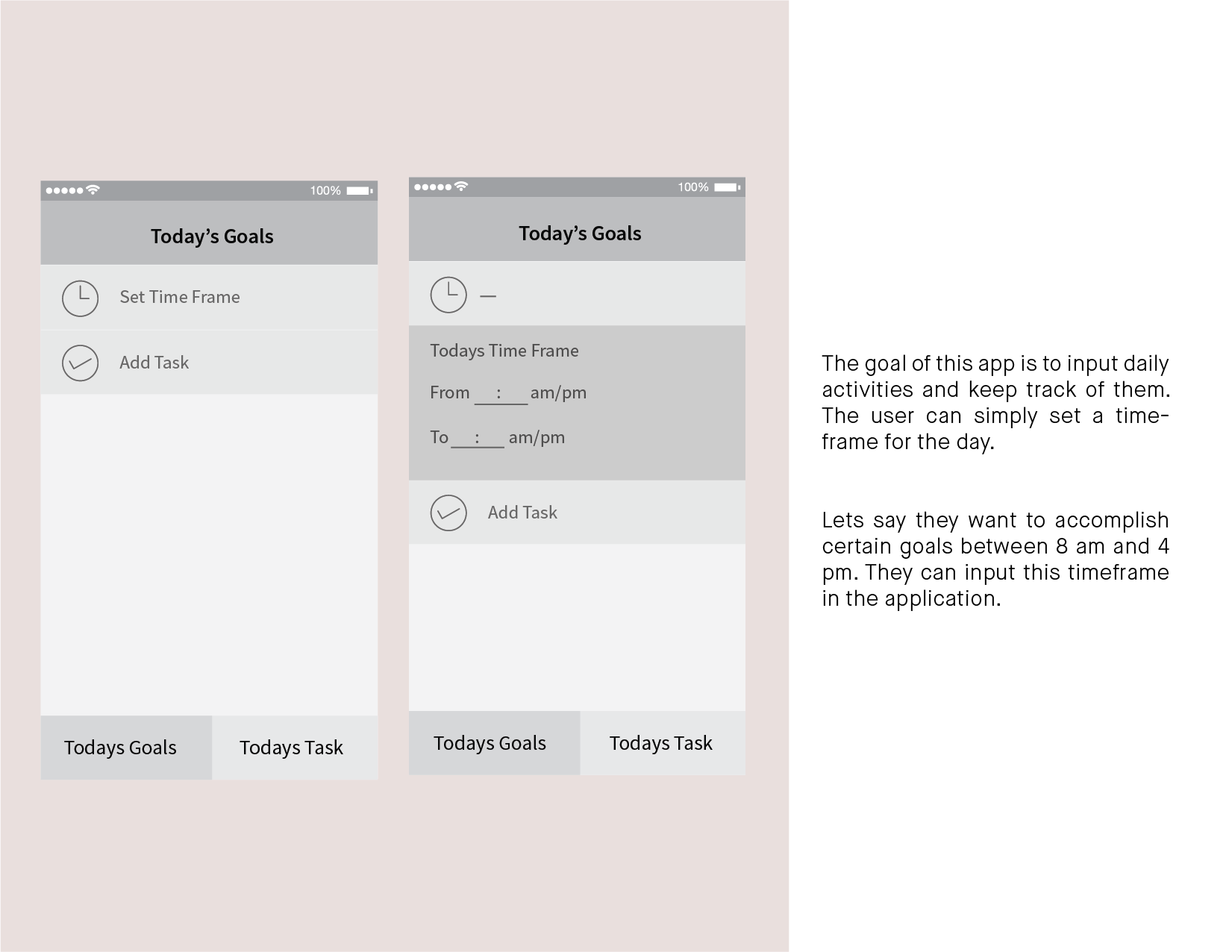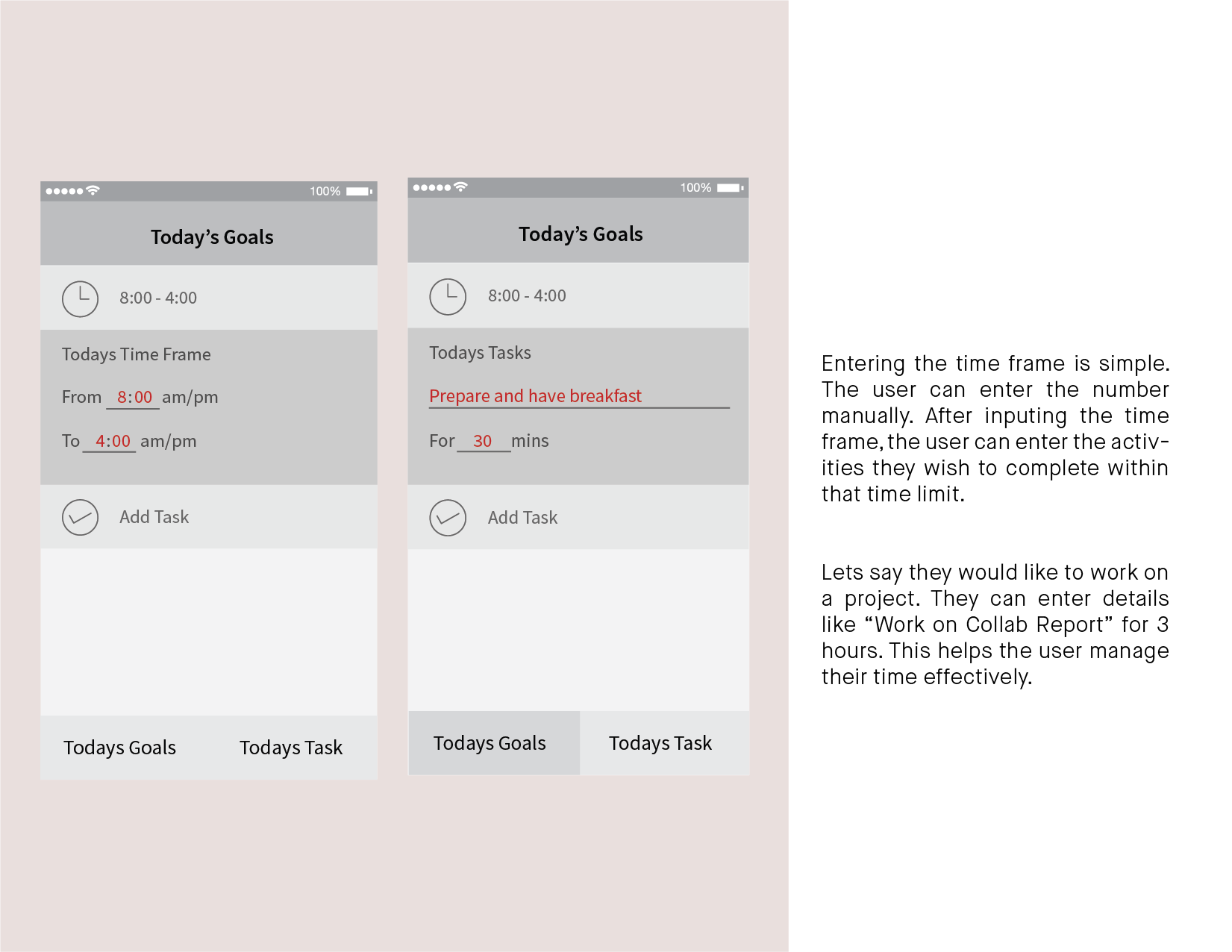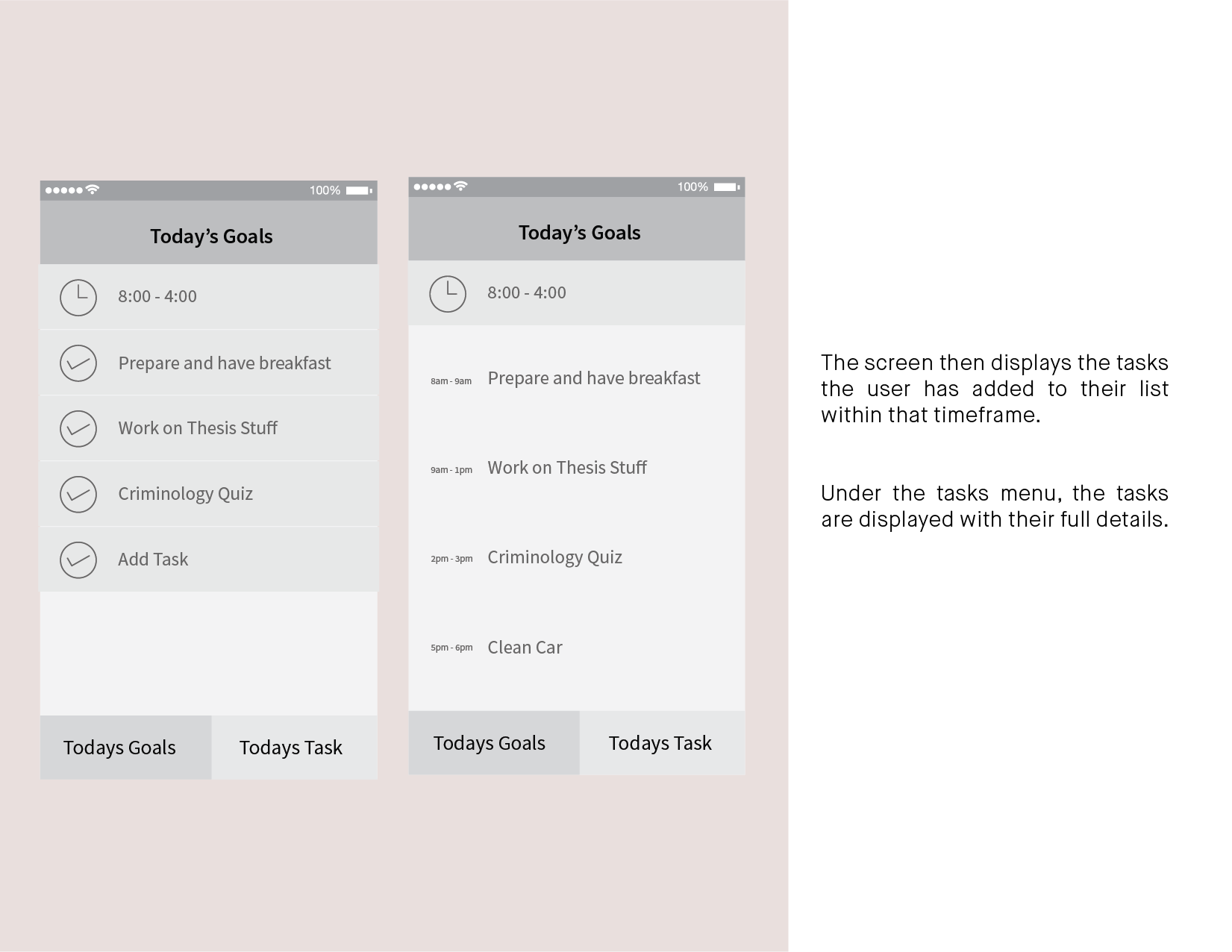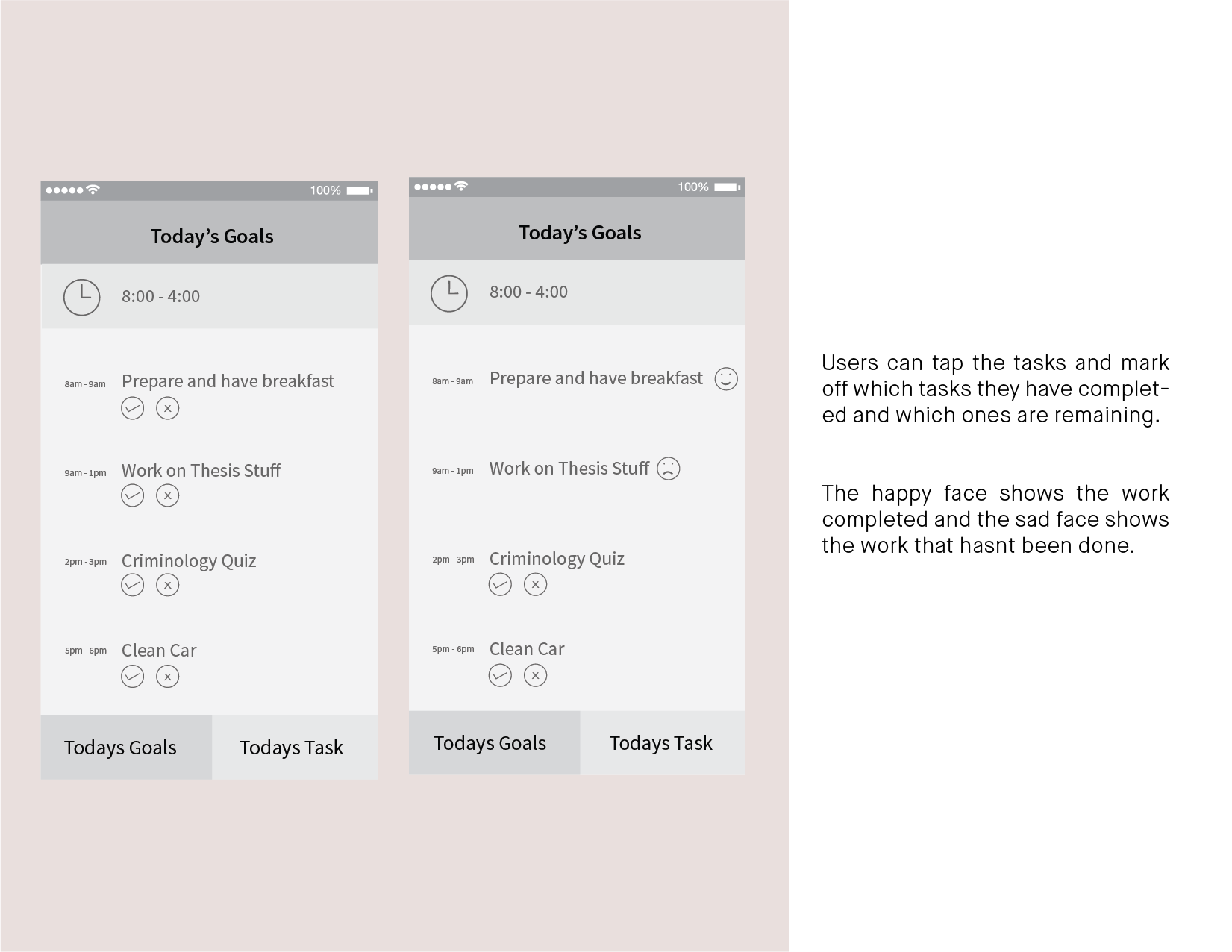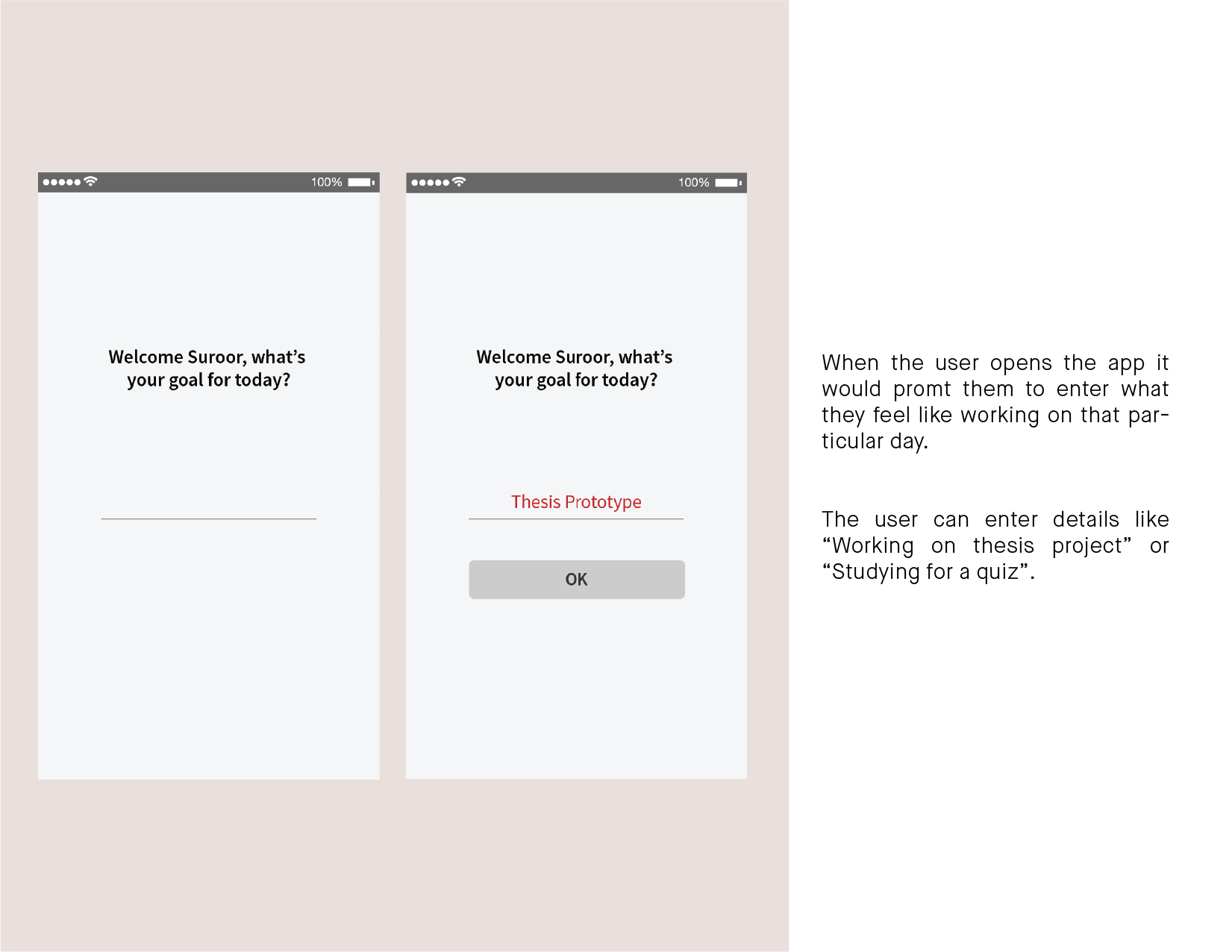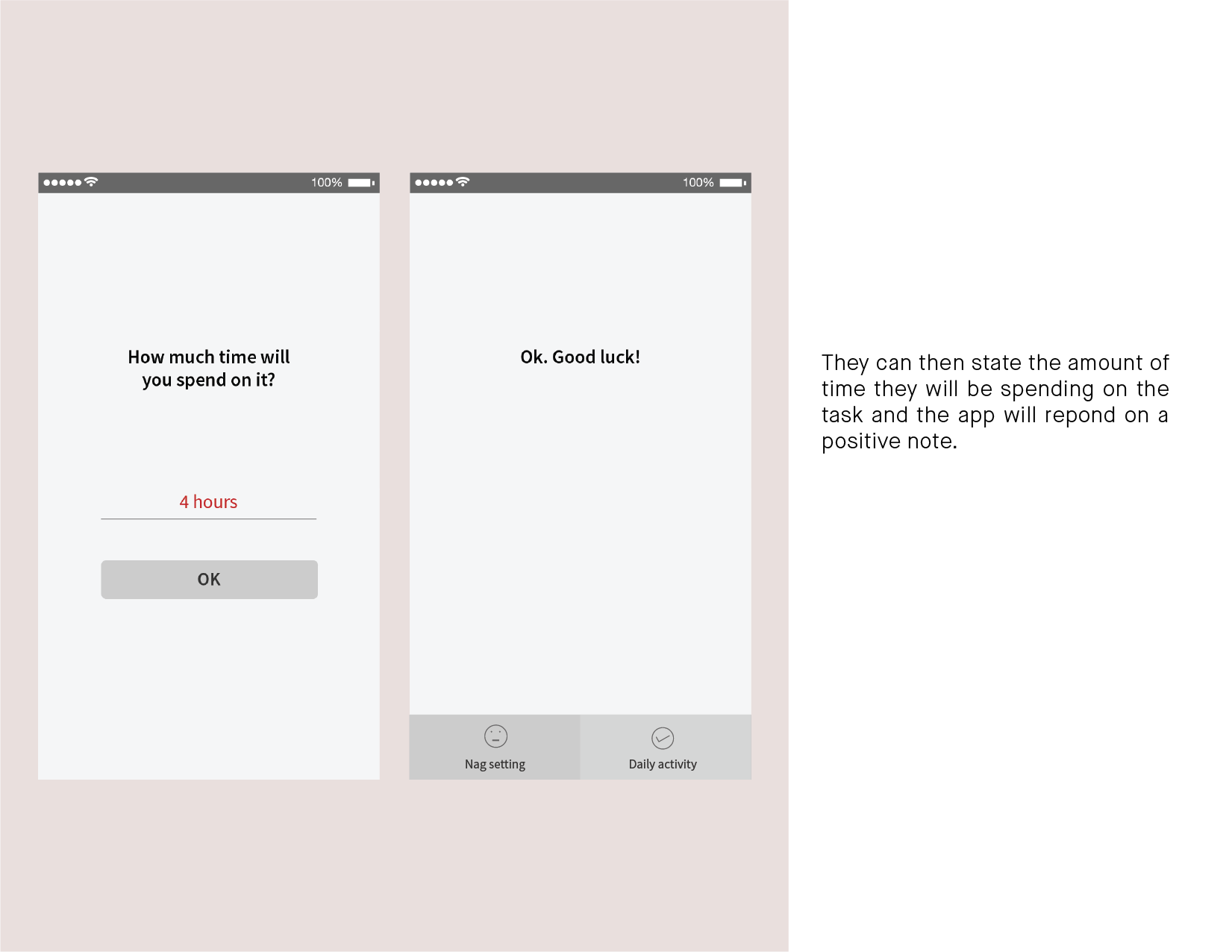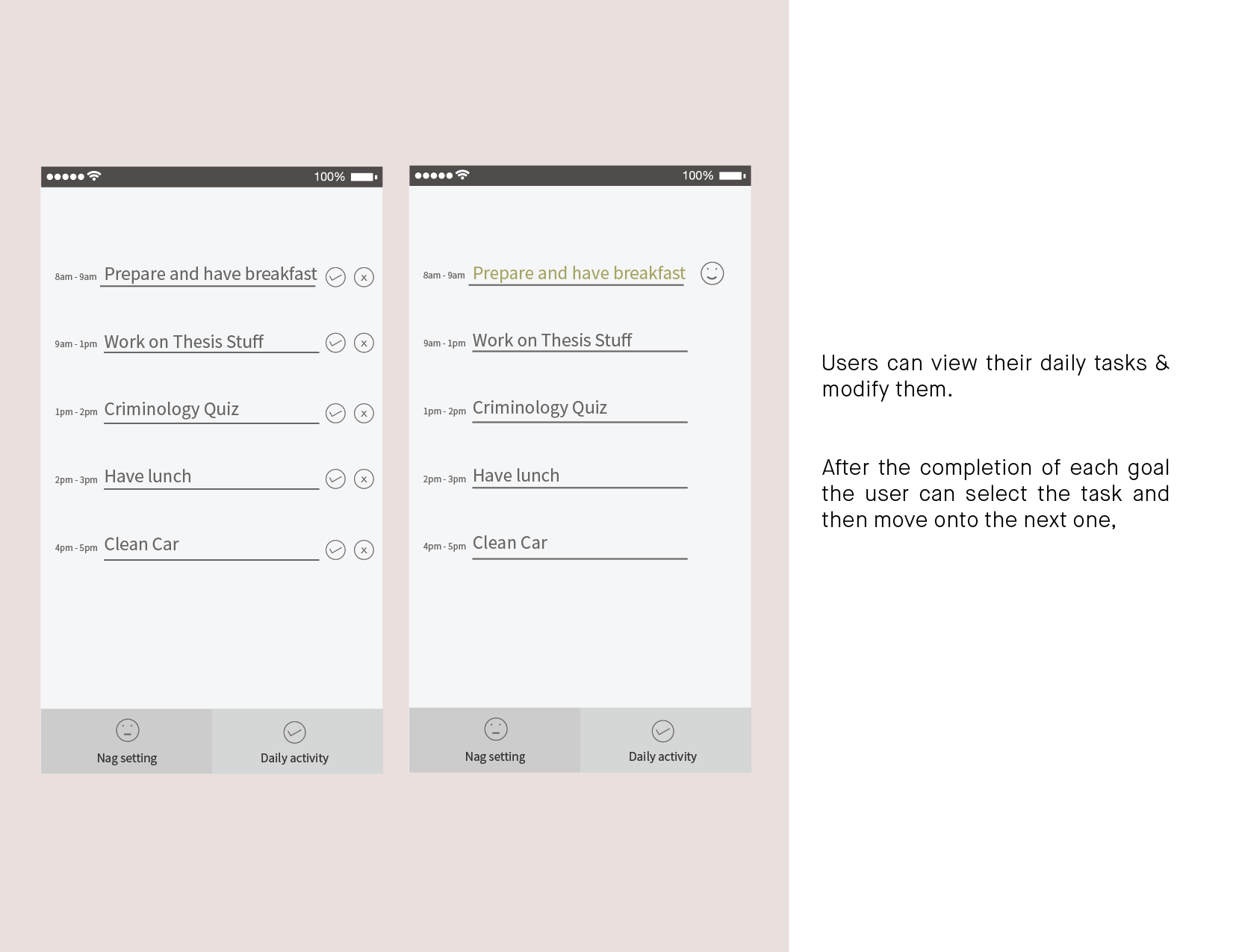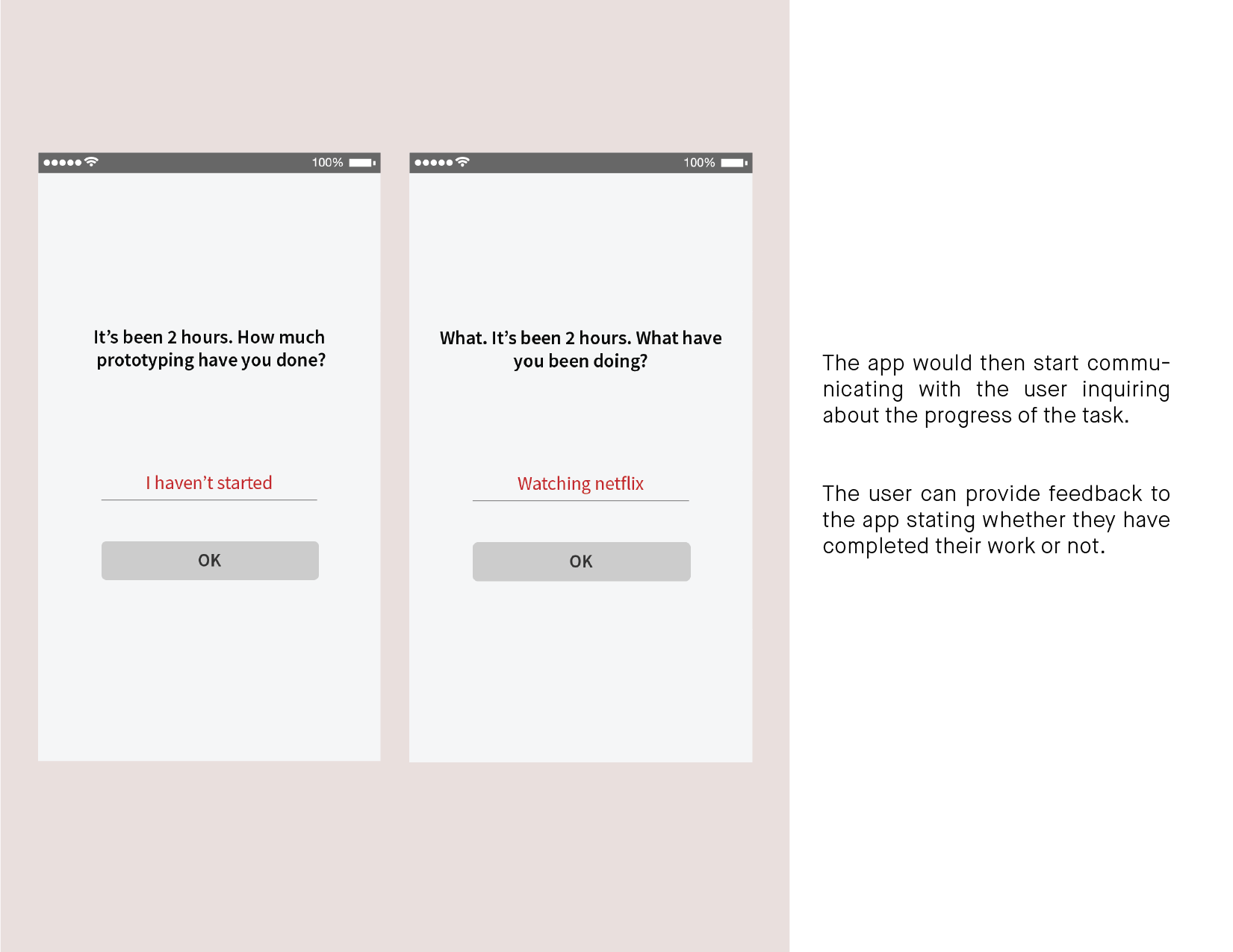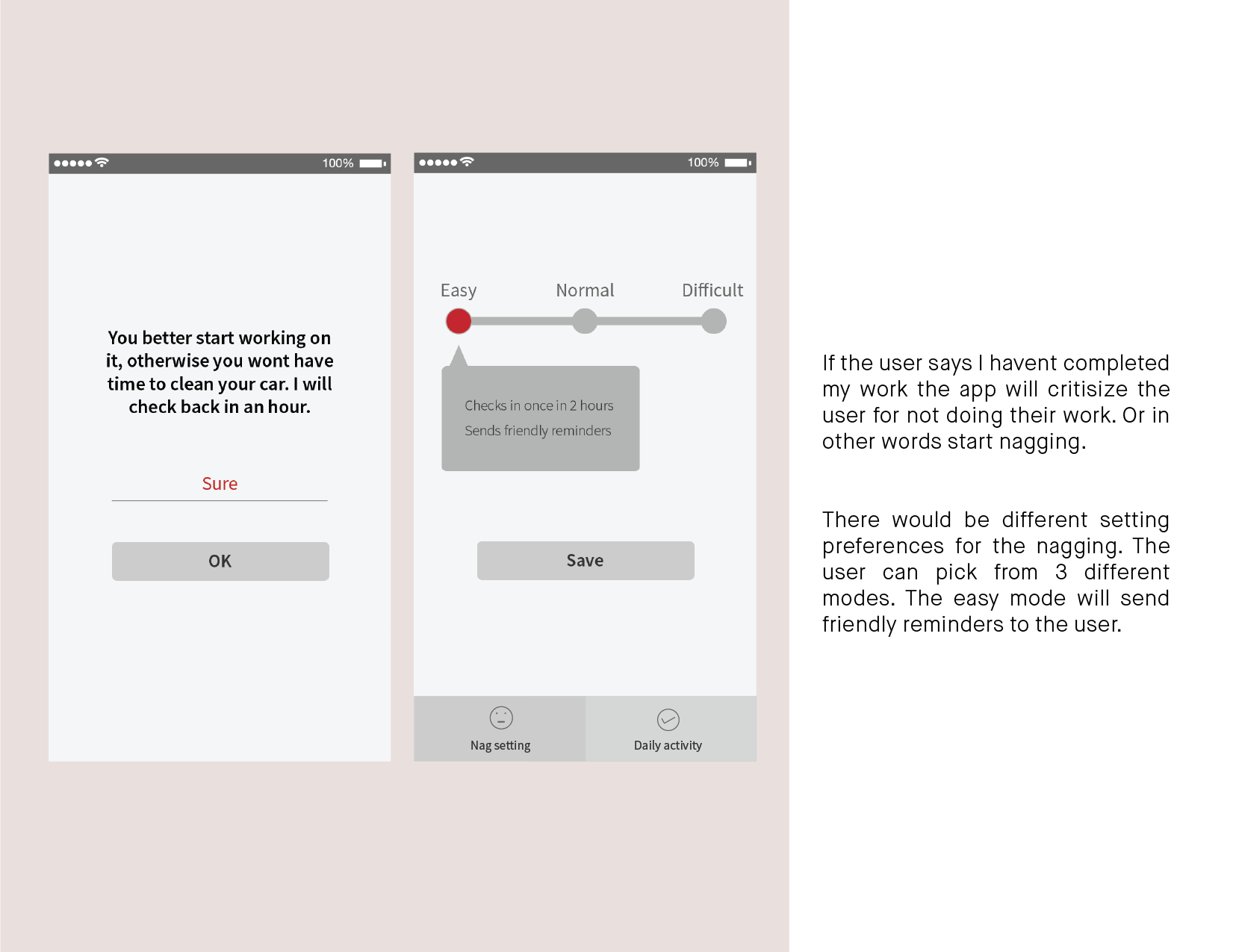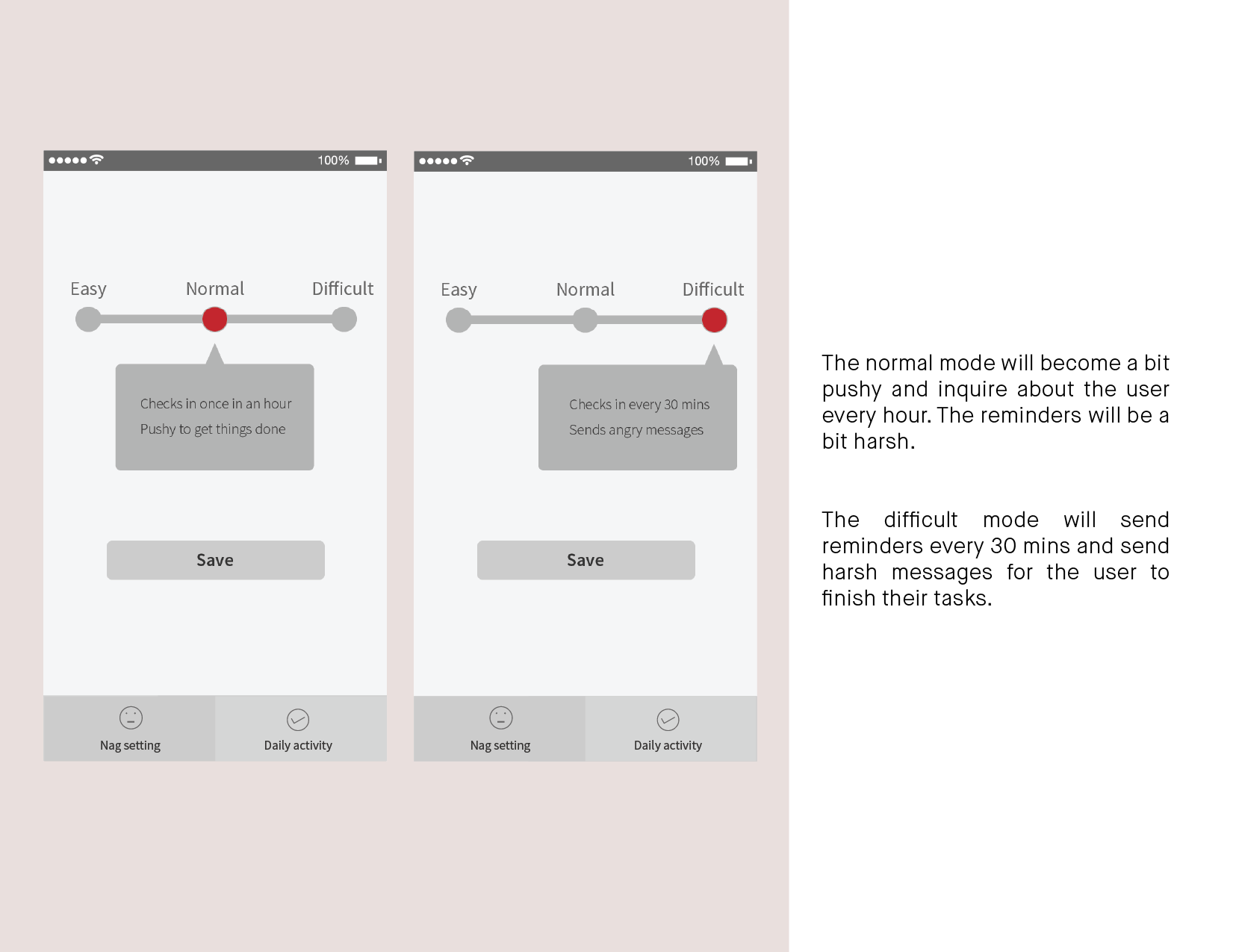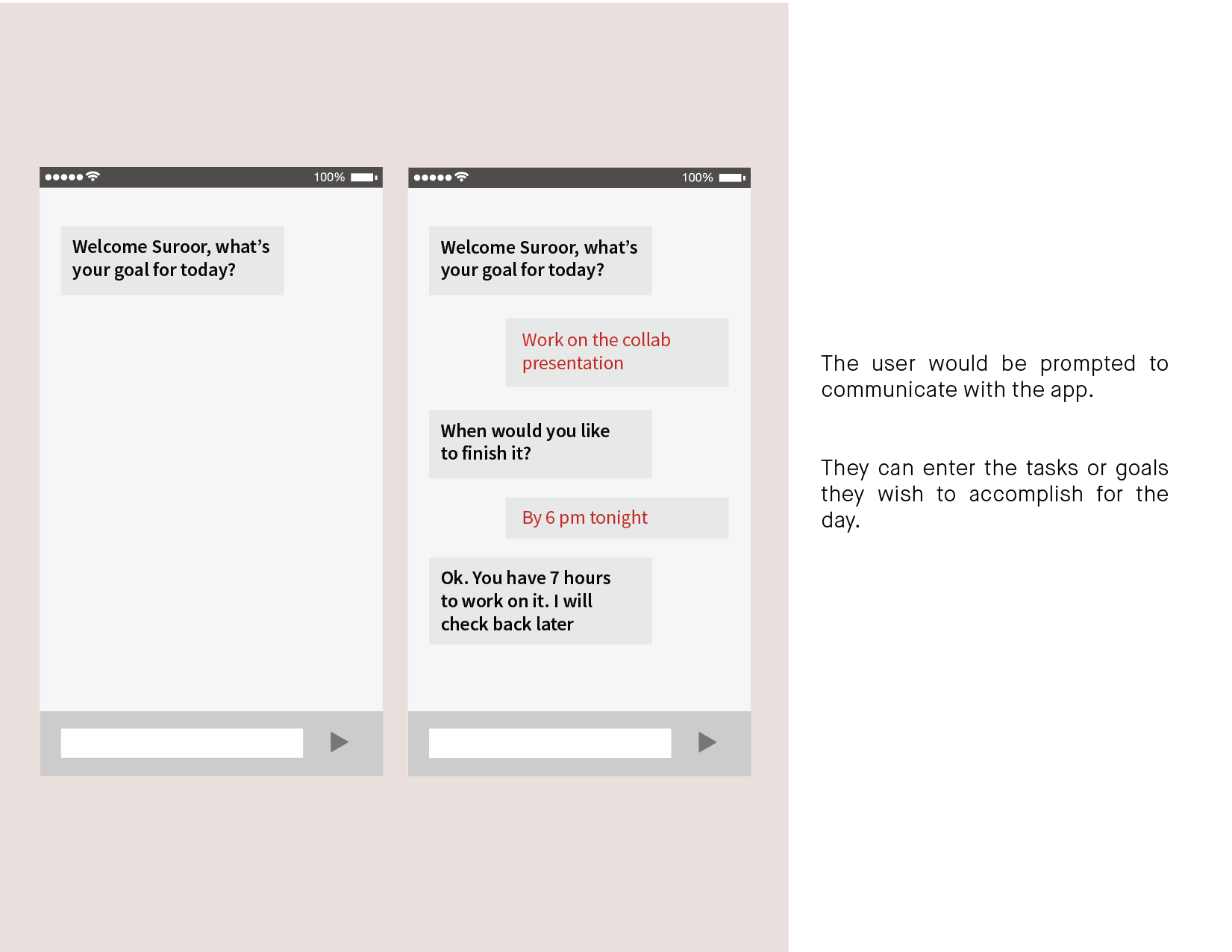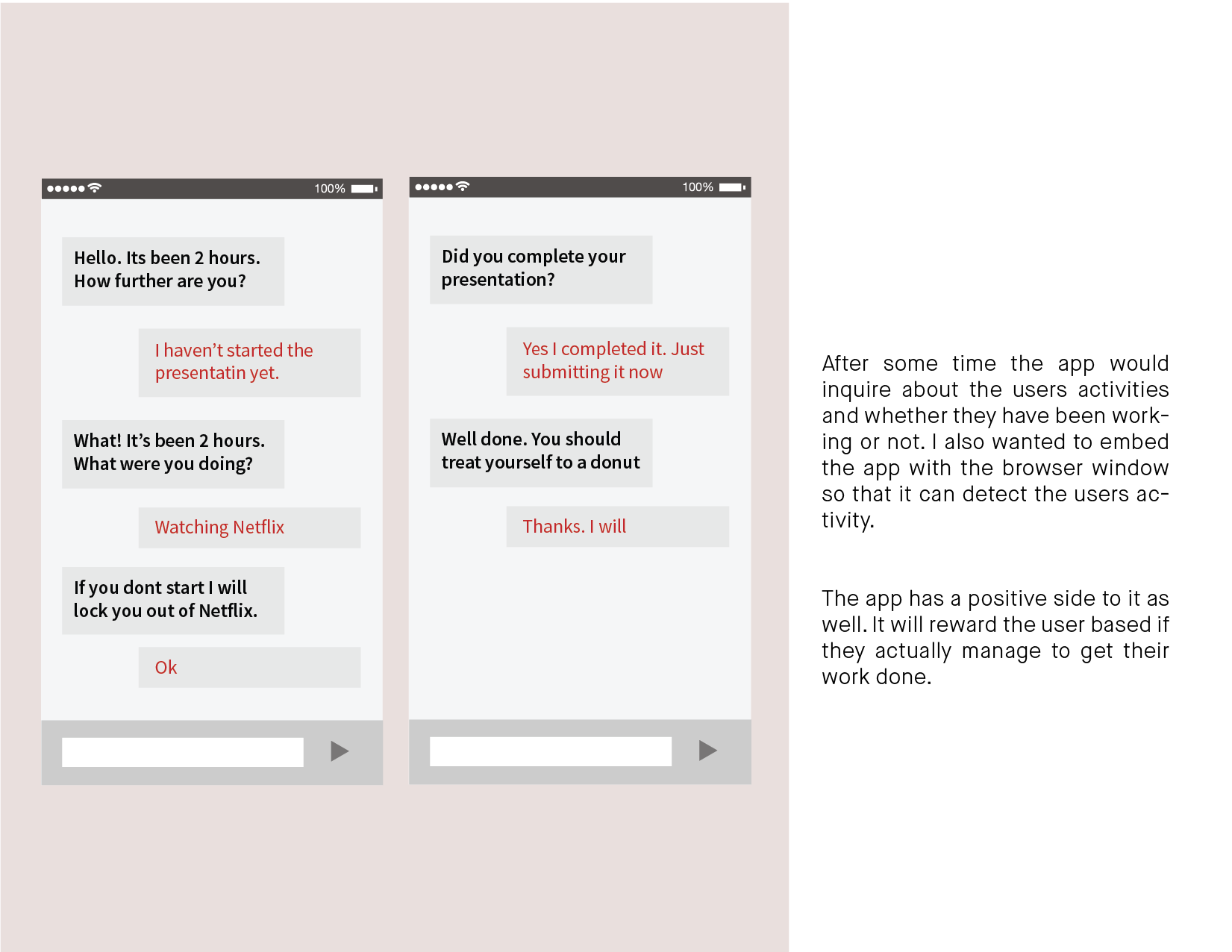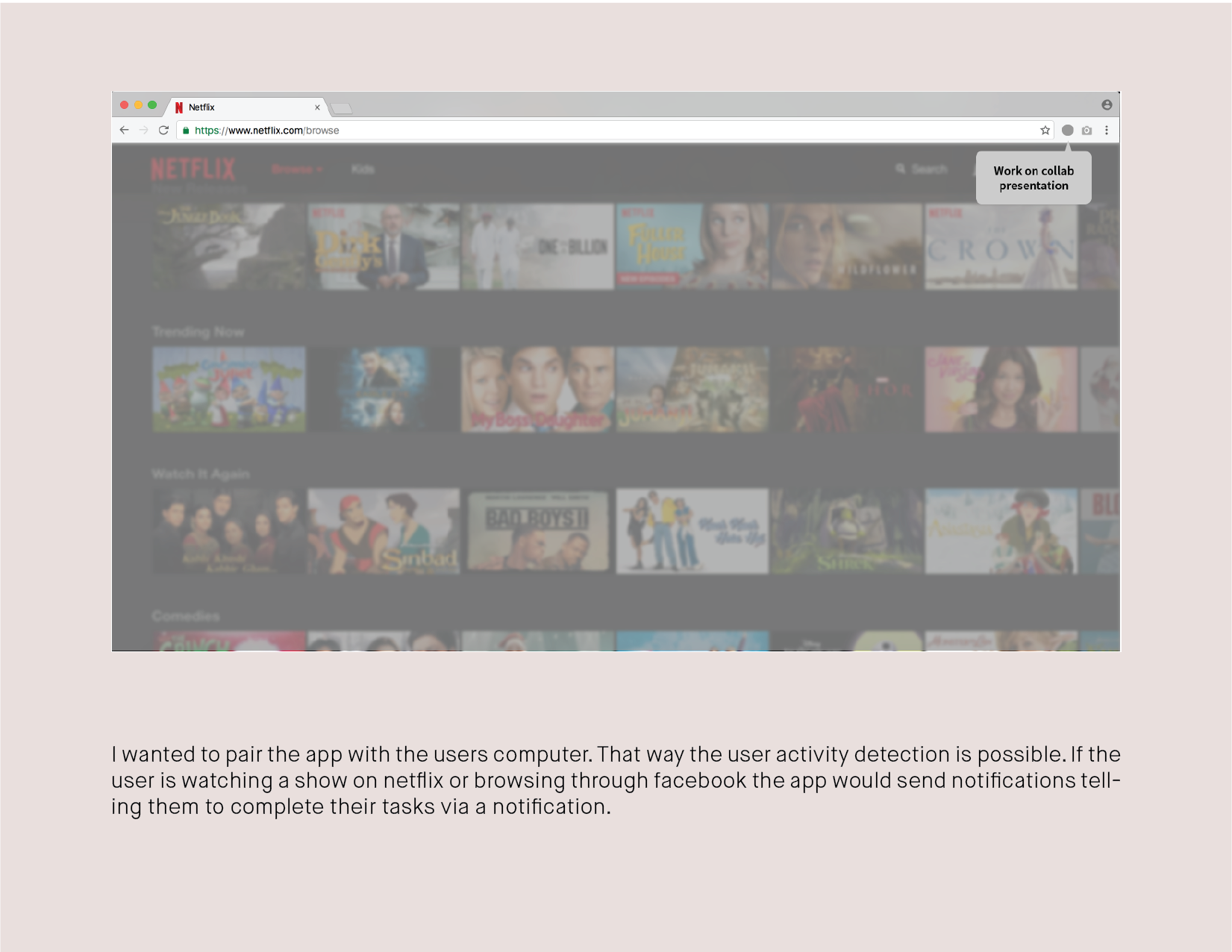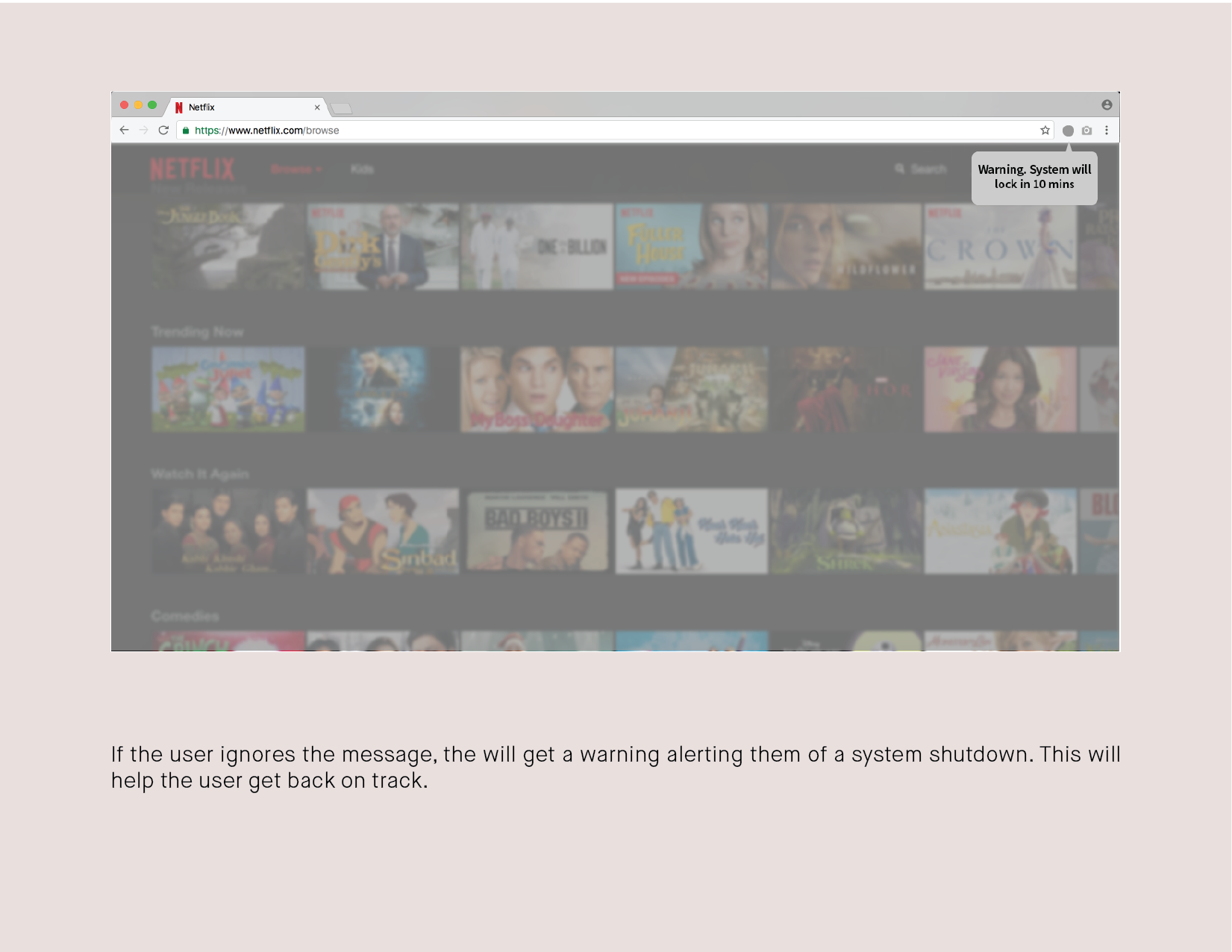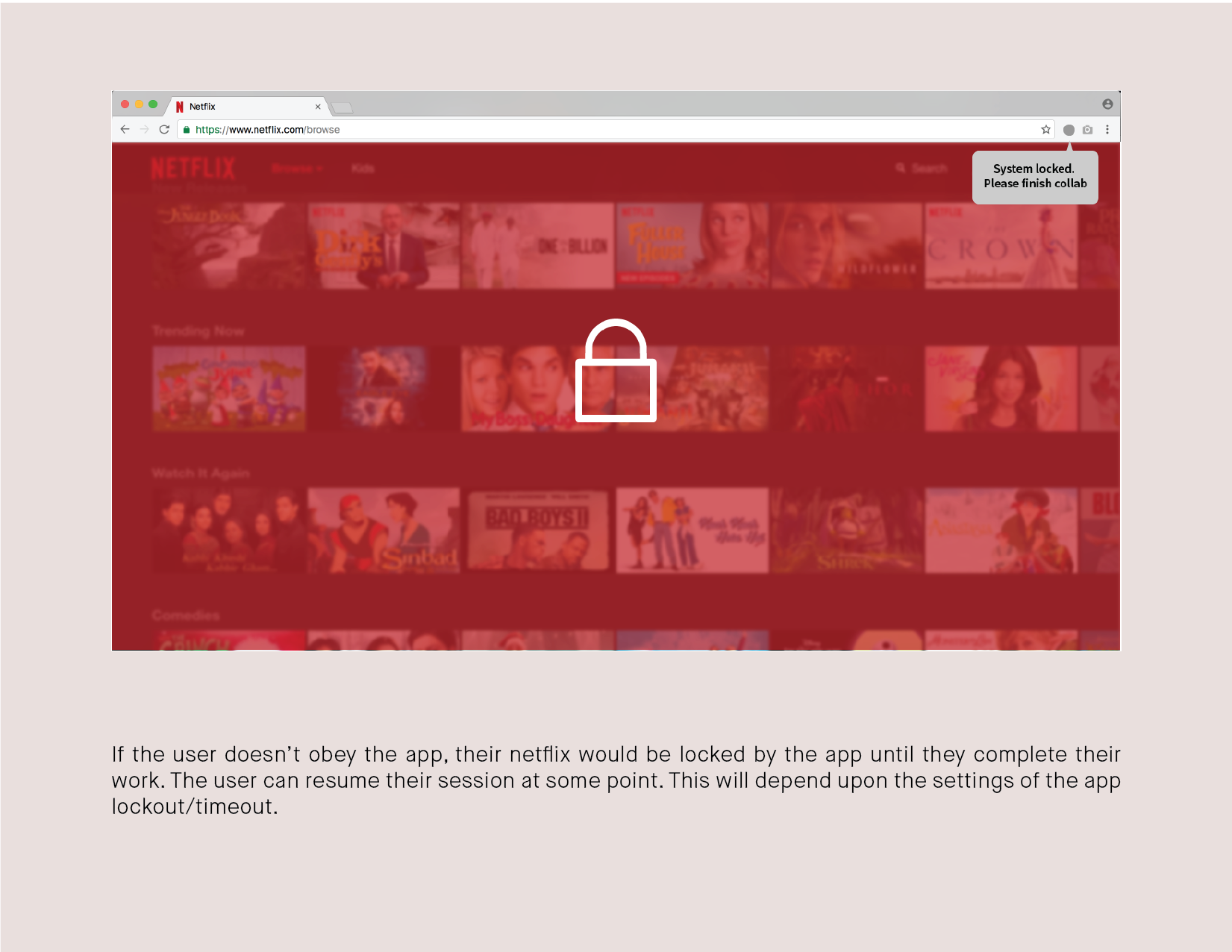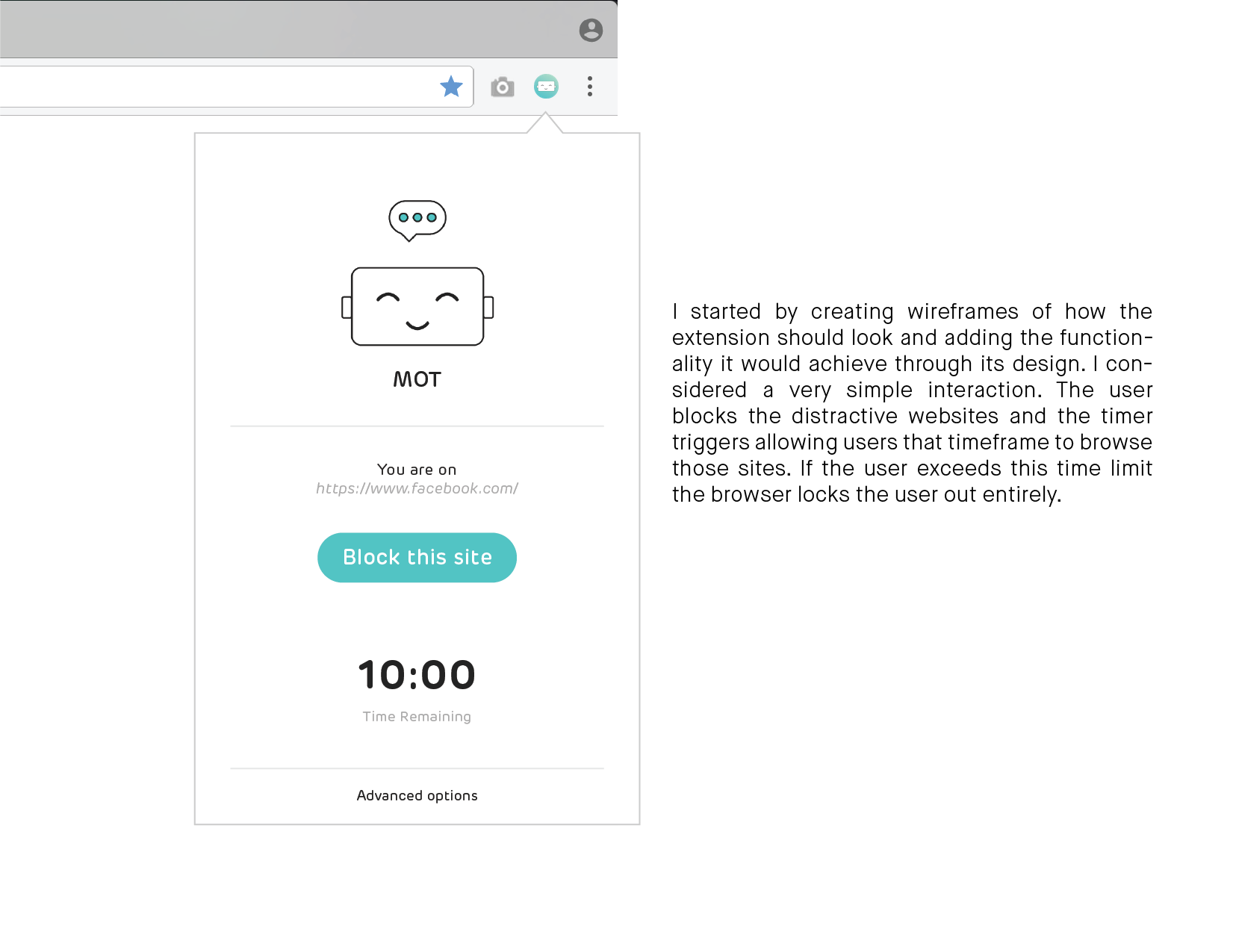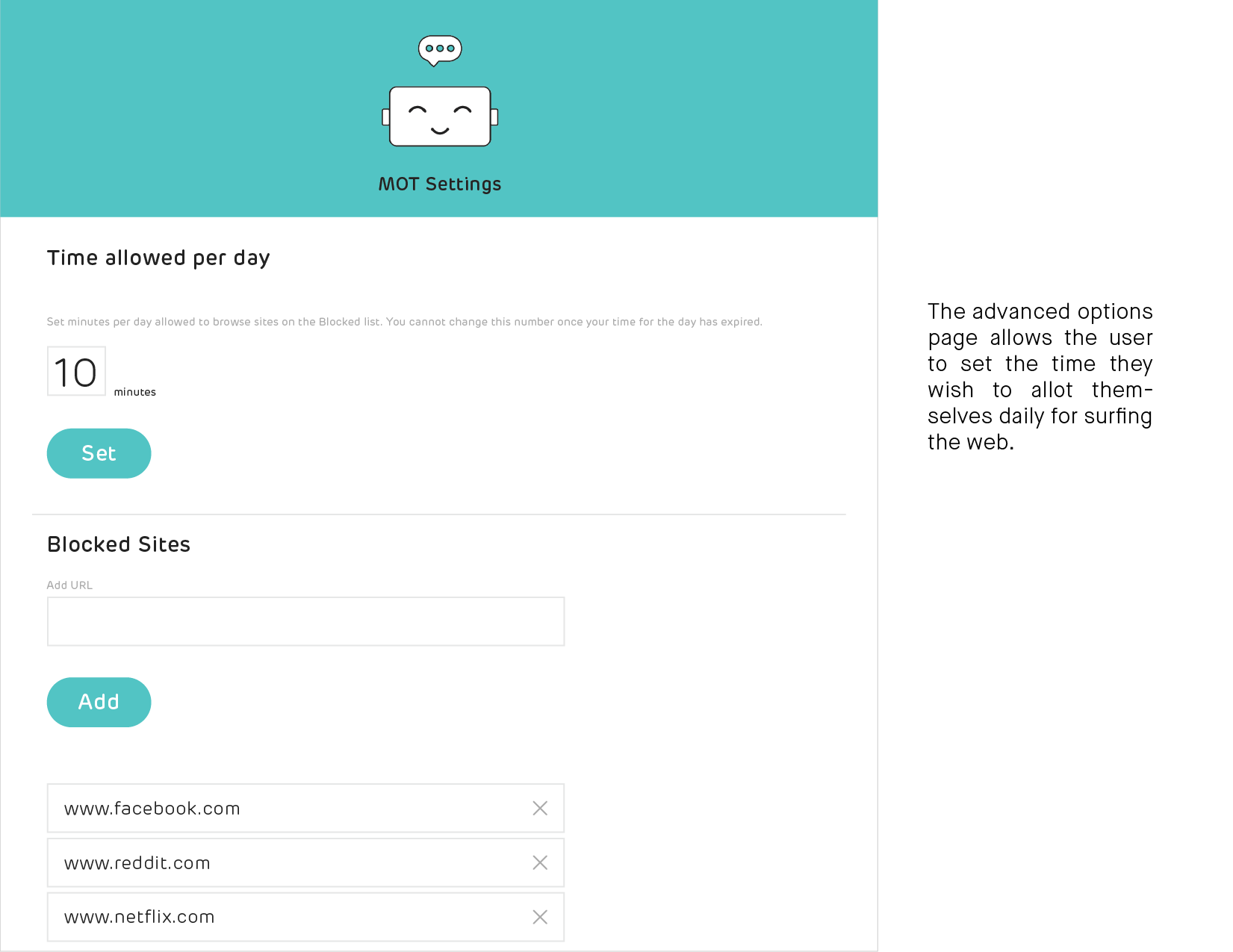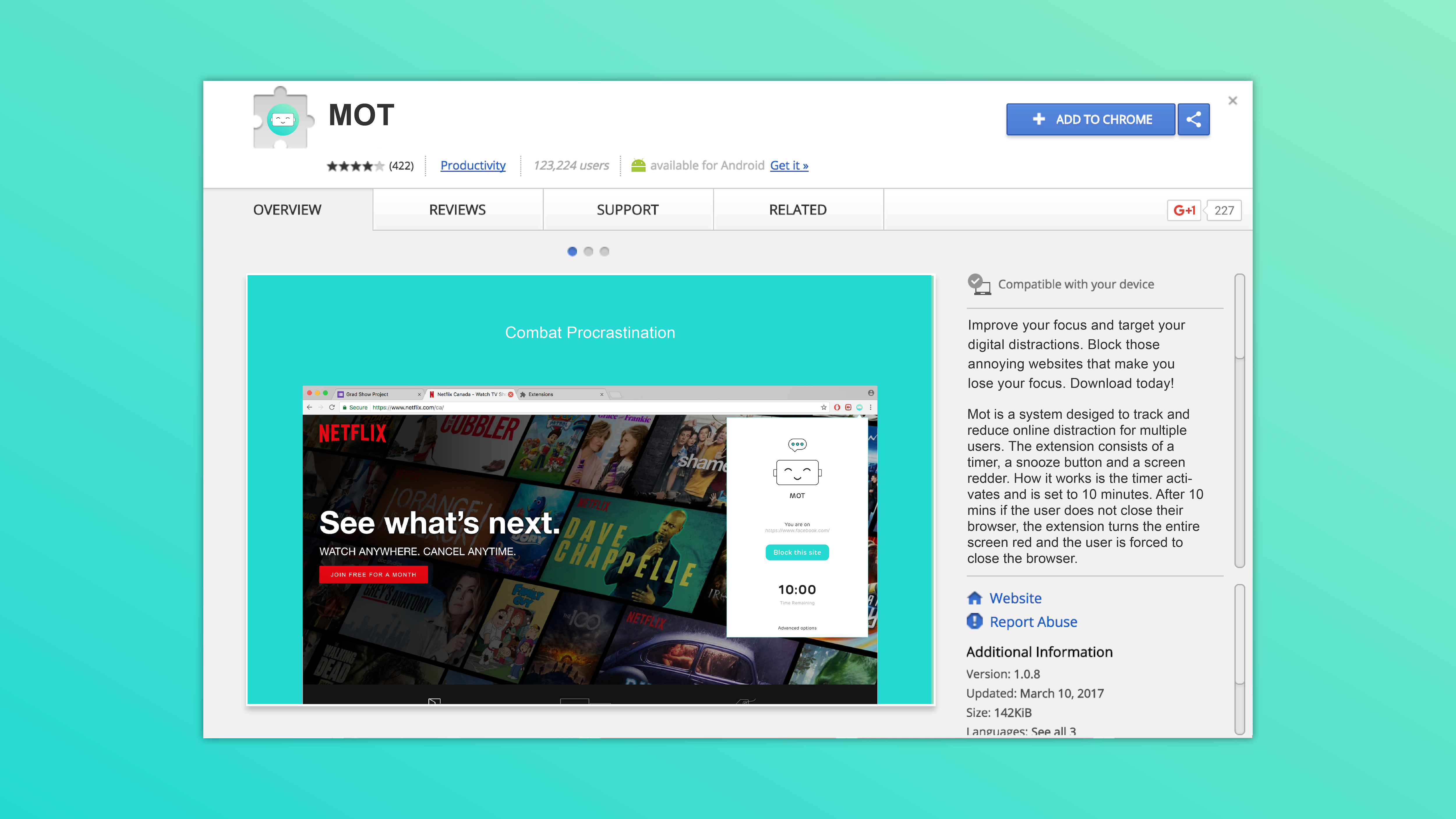

MOT
A productivity extension which will help the user combat procrastination. MOT assists the user by helping them reduce the amount of time they spend browsing distractive content by allowing them a time quota for those sites. This allowance of time allows the user manage their time better.
DATES: Sept 2016 - April 2017
ROLE: Individual Thesis Project
PROBLEM STATEMENT
What are the reasons leading students to avoid daily tasks, missing deadlines or working on assignments last minute. Is it due to an overload of school work, inability to find a balance between school work and other activities? Is it deliberate or unintentional? Are those reasons psychological such as anxiety, disorganization, depression or a deep rooted subconscious issue.


PRIMARY RESEARCH
I started by observing my own habits and what leads me to not work on projects in due time. I attended a strict school when I was younger and we were given a lot of homework. I dreaded going home and doing all that extra work after a long tiring day at school. So I would just play video games, watch tv. I would tell myself I had a lot of time to do it. Closer to the deadline I would start panicking and stay up late the night before the deadline to complete my homework or study for a quiz. This would result in a lot of fatigue, stress and a lack of time to complete the work. It would also cause sleep issues and feelings of regret. But everytime I tried to change my habits I would still go back into the same comfort zone I was used to.
What I learned is that my personal habits are embedded deep within my system. The schooling system and the culture I was raised in also had an impact as the more homework or things to do I come across, the more this habit kicks in.This cultural bias of giving students a lot of after school work gave rise to the deep rooted issue of procrastination.
QUESTIONNAIRE
I structured an online survey and distributed it amongst other sheridan students to complete. The survey consisted of 10 questions which are based on the Procrastination scale created by Psychology Professor Clarry Lay, York University. Each question inquires about how the person handles every day tasks. The results indicate that students often tend to avoid completing tasks and put it off until the deadline is approaching.
https://www.surveymonkey.com/r/SL8PRW3
I also managed to interview some of my peers regarding the subject matter, how they feel about their school work and how do they combat deadlines and manage other priorities.
INSIGHTS
I learnt that students often feel a lot of pressure due to load of work they have. They start feeling anxious and anxiety kicks in leading them to not start their work. They also expressed that writing things down helps them combat their inability to start tasks earlier.
JOURNEY MAP
After gathering all my observations I put together a journey map to gain a deeper insight on the factors affecting the performance of students. A journey map in the day of a student at sheridan to find out the elements that prevent them from completing their tasks or not having enough time.
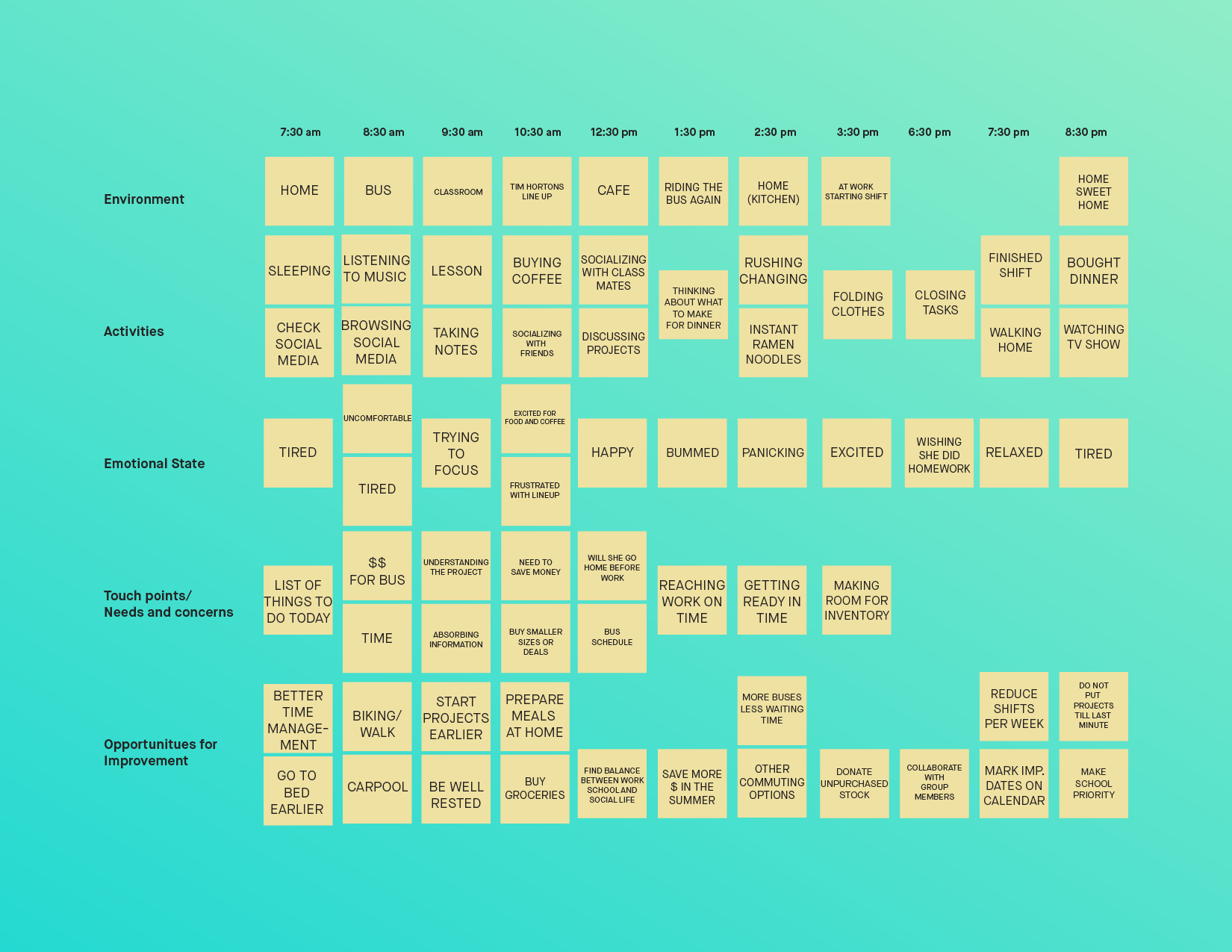

EMPATHY MAP
I also compiled an empathy map to gain a deeper insight on the factors affecting the performance of students. From my research I’ve learnt that everyone procrastinates at some point and there are many factors that contribute to it. Factors such as stress, anxiety, work overload, outside school obligations etc. When a person is more stressed they tend to ward off their work until later.
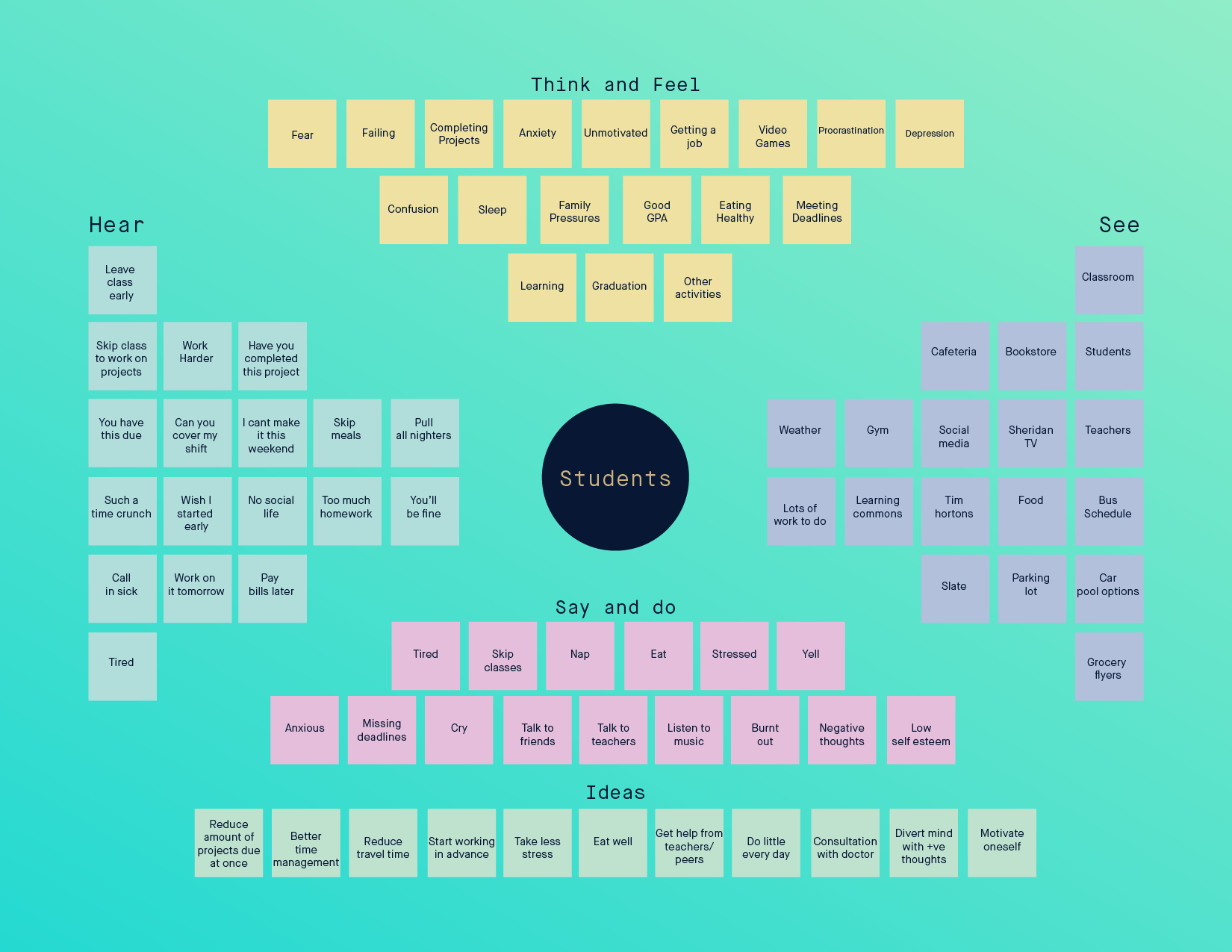

PSYCHOLOGIST INTERVIEW
I interviewed a psychologist from Harvard University and she provided a different outlook to the matter of procrastination i.e Procrastination is a sign of intelligence. She mentioned that there are 2 types of procrastinators, Active - the ones that feel a rush doing tasks last minute and Passive - who are unable to manage their time. There is a third type but for these people, their frontal lobe is not fully developed until the age of 25 which is why they have a hard time coping with deadlines.
She also spoke about anxiety and said that if a student is feeling anxious or distressed they should take breaks and when they are studying, they should focus on what they are doing even if its for 30 mins. She also emphasized on the importance of sleep and a good nights sleep reduces stress and a person is fresh to cater to tasks the next day. Also that there are many distractions nowadays and if one feels distracted they should infact go out and deal with the distraction and then come back and complete their work.
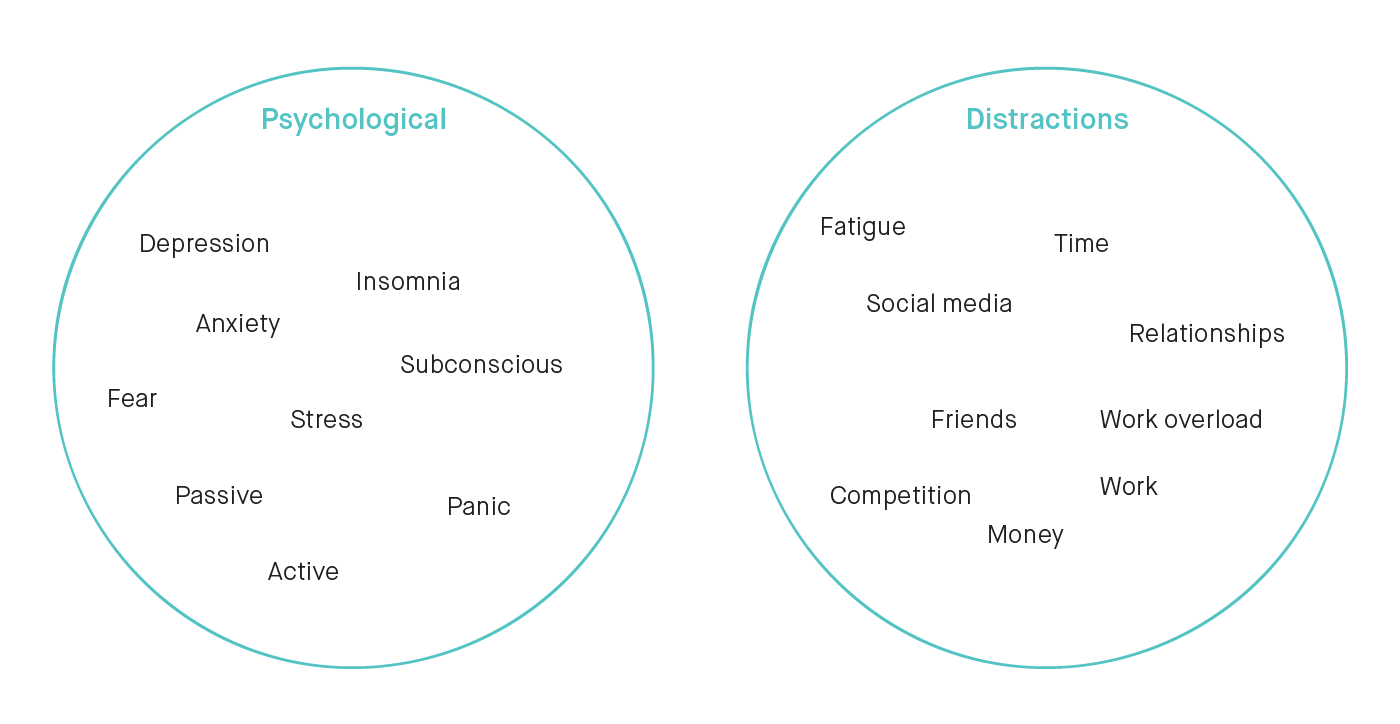

STAGES OF PROCRASTINATION
From my research I’ve gathered that every procrastinator goes through these 6 stages.
Stage 1: False Security
Having some time to complete the task and putting it off until later.
“Its not due until November, I’ll start working on it later”
Stage 2: Denial
Assumming that there is ample time to complete tasks despite the approaching deadline.
“I’m busy right now. I still have time to do it”
Stage 3: Stress/Anxiety
Stress caused by the upcoming deadline. This creates a stressful scenario which makes it difficult to start of complete the task.
“I feel really stressed right now. I’m unable to focus”
Stage 4: Crisis
Accomplishing the task last minute. Suffering more and performing less. Hinders good outcomes.
“I should have started earlier”
Stage 5: Regret
The regret of not taking a head start.
“I’ll never procrastinate again”
Stage 6: Repeat
The action of repeating the same pattern despite experiencing previous frustrations.
“I managed to complete it last minute”
TYPES OF PROCRASTINATORS
The Perfectionist (Active): They find it difficult to begin tasks as they are careful of every tiny detail.
Dreamer (Active): Most of their thoughts are abstract and are great but they dont bring those ideas to life.
Crisis Maker (Active): Like to complete tasks last minute. They feel a rush working under pressure.
Defier (Passive): Defies completing the tasks at hand.
Over doer (Passive): The find it difficult to prioritize the tasks at hand and procrastinate on one to complete the other.
Worrier (Passive): Fear of stepping out of their comfort zone. They worry a lot causing stress leading to things not being accomplished.
REFRAMING THE PROBLEM
Procrastination is very common among students. From my intensive research I have analyzed that students feel anxious and overburdened and are not able to accomplish their goals. My goal is to understand how to end anxiety and invoke positive feelings and trigger accomplishment and how to motivate students to complete their work on time.
My idea evolved in different phases of testing and prototyping. In each phase I rebuilt on the existing fuctionality based on the previous user testing phases. To test my concepts, I developed wireframes and posted them on invision for people to test and provide feedback.
IDEATION STAGE 1
Day ToDay: An app that helps users input and plan their daily activities.
FINDINGS
After testing the functionality with students I found that there was a great deal of input required and users tend to not complete their tasks even if the tasks are displayed all at once. Setting a time frame also does not effect the users behavior in any way. Some flaws were that users have to go within the app itself and manually enter data. People who are procrastinating would not prefer using a app for time management. This idea did not succeed.
IDEATION STAGE 2
The Nagger: An app that lets users interact with a virtual buddy when they are procrastinating. Testing my first concept gave me a lot of insight on the users behavior. Procrastinators often find it difficult to manage their tasks. Therefore I wanted to integrate a system where there could be communication between the user and the application.
FINDINGS
After testing the second version of the prototype I discovered that the back and forth communication is quite helpful and many people would like to have a virtual buddy system to communicate with. However some students expressed that the nagging fell into a negative context and instead it should be a motivator where the app motivates the user instead of sending harsh messages. Also there should be a punishment for the user for not completing their work. The user can simply get out of the app to avoid the negativity but if there were some sort of punishment, then users would be more prone to getting their work done.
IDEATION STAGE 3
The Motivator: I tweeked the design of the app and its functionality. The system will remain a virtual buddy but it will have the capability to reward and punish the user depending upon their behaviour. I also changed the name of the app to motivator to achieve a more positive approach.
FINDINGS
Using a reward and punishment system will help students procrastinate less. The human body releases dopamine and serotonin when it is rewarded and it craves that feeling continuously. Locking the user out of their personal accounts and forcing them to do something is a great way to achieve results.
For the first phase of the project, I was solely focused on creating an app that would assist in managing time. After presenting my findings to my peers and proff, I realized that I could simply target the users browser activity by a browser extension which would aid in controlling the users urges to browse the internet for useless things.
After several stages of user testing my project evolved from being just a simple mobile app to a chatbot and a chrome extension. For the first half of the semester I focused chrome extensions and on achieving the functionality of the extension which was successful. The goal was to embed a timer functionality to the extension and block the user out of the web browser. The second half of the term was spent improving the functionality of the extension to help the user achieve their goals.
HIGH FIDELITY WIREFRAMES
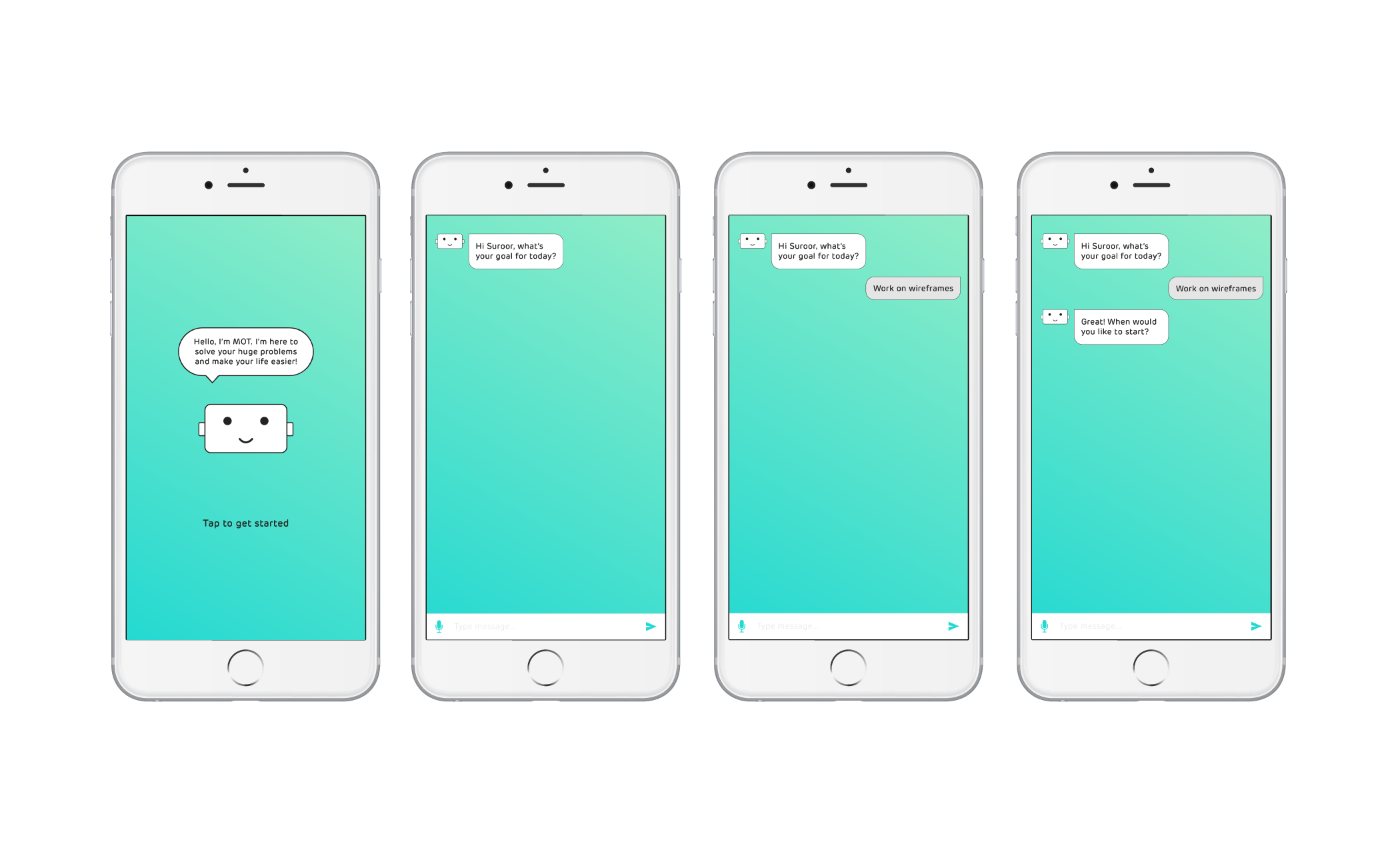

SYSTEM MAP
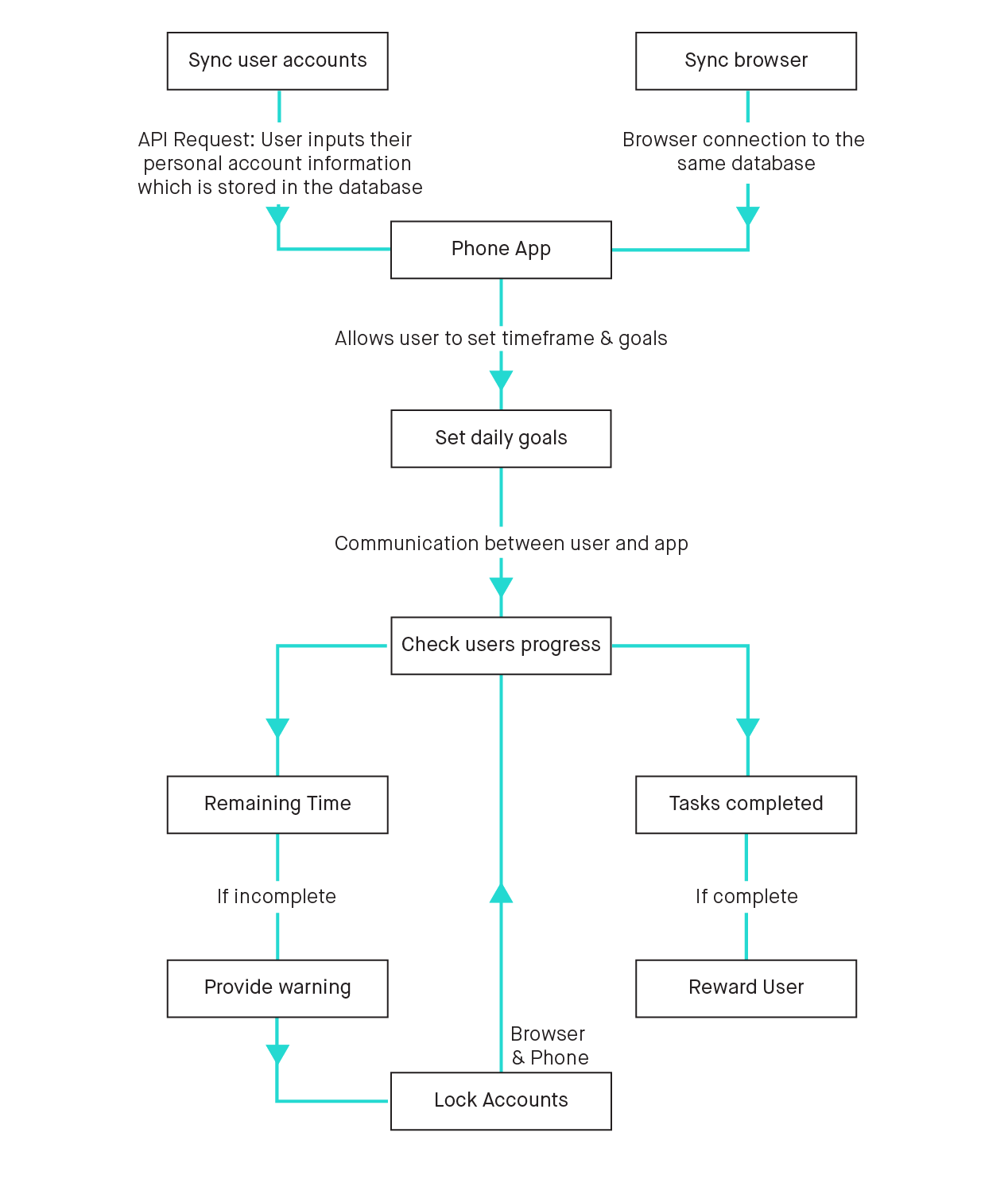

RISK MANAGEMENT CHART
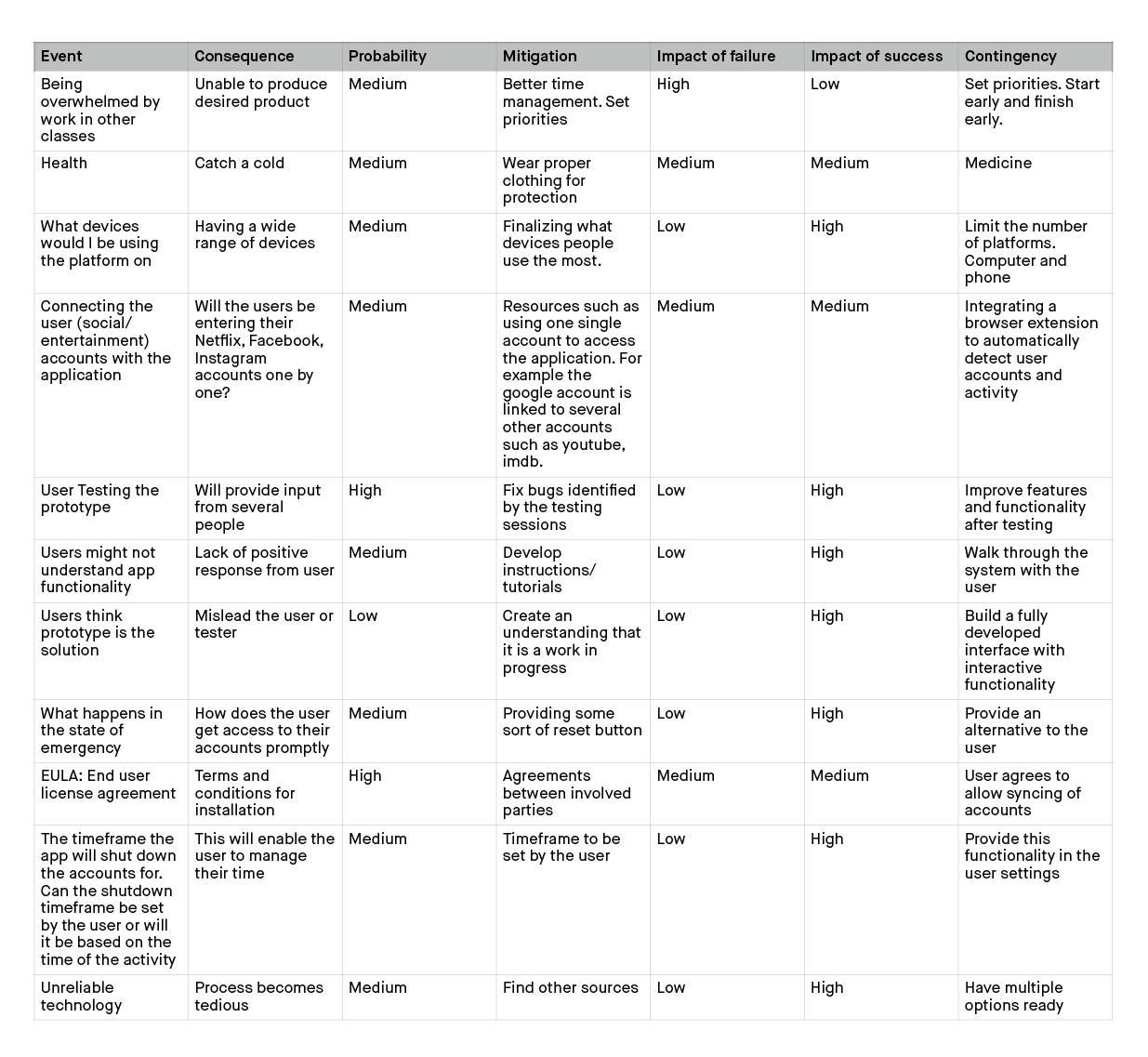

FINAL DESIGN
MOT short for motivator is a browser extension which helps the user combat procrastination. MOT assists the user by helping them reduce the amount of time they spend browsing distractive content by allowing them a time quota for those sites. This allowance of time allows the user manage their time better.
PROJECT VIDEO
FINAL THOUGHTS
Creating a product from start to the finish is a difficult process. For me there was a great deal of learning although I have had prior knowledge of javascripting. I faced a few challenges as I got one functionality to work and then would be stuck again with the next bit. But overall I am satisfied with how the end result looks and I’m glad it is something that functions well and can be used by people. Although it might still require more refinement, I would definately continue working on my extension over the year and upload it to the chrome store for people to download and use. What helped me most in this process was creating a list of goals I wished to achieve with the final piece as it made adding the functionality easier.
